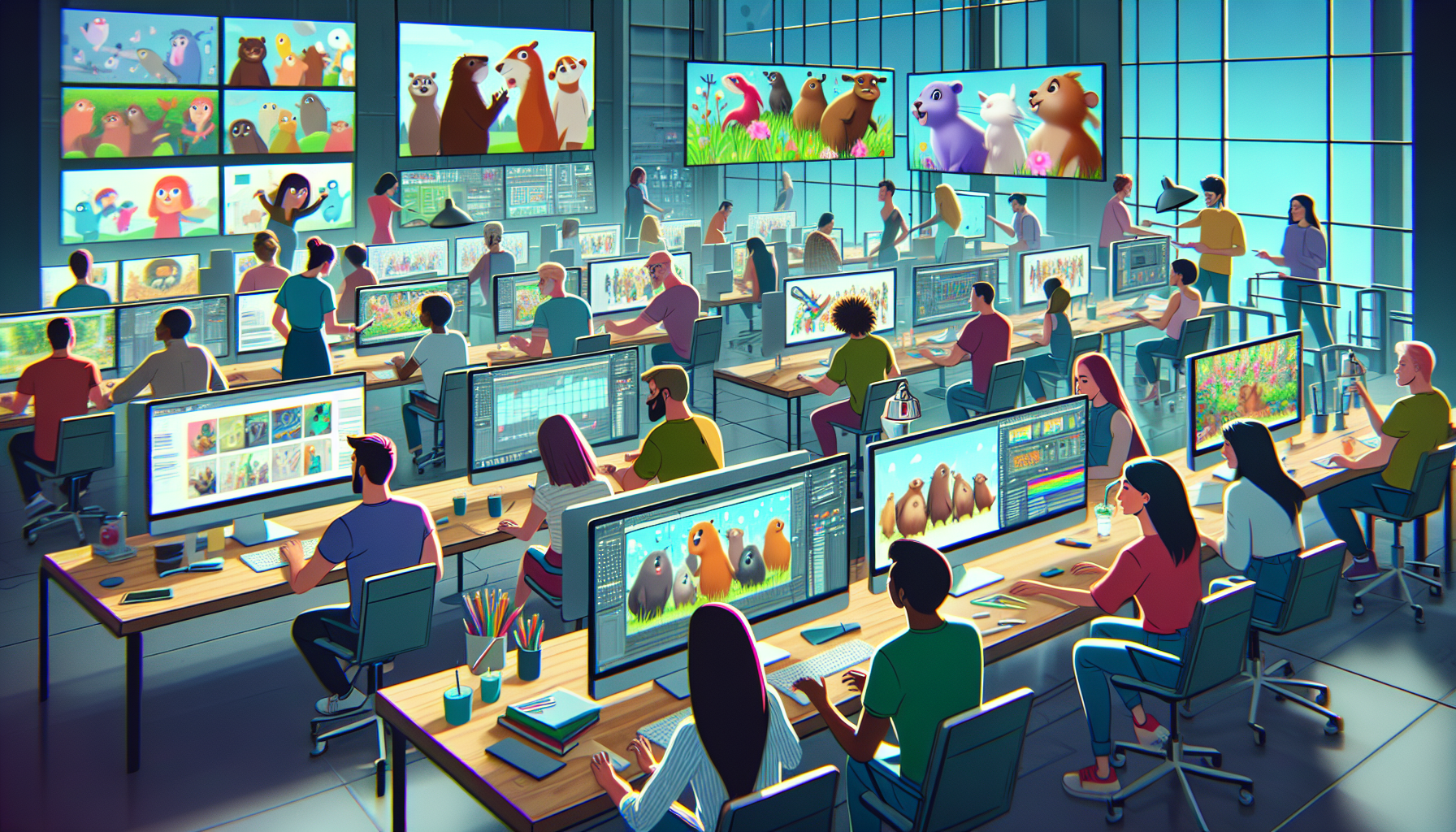
Lights, Camera, Beav-action!
When you first think of beavers, you probably picture a furry little craftsman, diligently building dams in rivers. You likely don’t imagine these buck-toothed critters mastering Adobe After Effects. But let’s dive down the digital river and explore how the ambitious, albeit fictional, film project titled Hundreds of Beavers achieved a stunningly polished visual aesthetic using After Effects to bring its animated rodent cast to life.
Setting the Scene
Imagine the setting: a serene forest, gentle streams, and the soft rustling of leaves—that’s the kind of tranquility that the film, Hundreds of Beavers, aimed to shatter by adding high-octane, visually compelling animations that could make even the sleepiest beaver slap its tail in applause.
Chewing Through the Basics
First off, let’s gnaw at the basics. Adobe After Effects is a digital visual effects and motion graphics behemoth, tailor-made for post-production work on film and television. For our creatively ambitious rodents, it offered just the right set of tools to kick their visuals up a notch—or several.
Creating Fluid Water Effects
One of the pivotal scenes in Hundreds of Beavers involved an epic dam construction sequence. This demanded incredibly realistic water simulations, which could’ve been a dam-buster to animate manually. Enter Adobe After Effects. With its robust particle systems, the After Effects wizards concocted a fluid dynamics cocktail that had water swirling, flowing, and crashing against the meticulously placed logs with all the drama of a Shakespearean play. The Particle World feature became the unsung hero, allowing for the creation of lifelike water and foam without causing any animators to weep by the riverside.
Adding a Splash of Color with Visual Enhancements
Anyone who has ever witnessed a sunset reflected in the serene surface of a beaver-engineered lake knows that color is key to setting the mood. After Effects provided an extensive palette and tools like Color Finesse that allowed the coloring team to manipulate hues and saturation levels, giving every frame a nature-documentary-meets-Disney allure.
Motion Blur: The Whirls and Swirls
High-speed beaver action sequences, such as log rolling, tail slapping, and woodland parkour, all needed a blur of motion to convey speed and lend credibility to the frenetic activities of our furry friends. Using the Motion Blur feature in After Effects, the animators were able to blur lines just enough to make every action sequence a heart-pumping thrill ride without making viewers dizzy. It’s all about that blur balance!
Compositing: Putting It All Together
Imagine you’ve got a delicious stew bubbling away. Your ingredients are all top-notch: impeccable animation, breathtaking visuals, and expertly simulated effects. Now, to bring it all together. After Effects’ compositing tools allowed the team to layer all these elements in a cohesive, visually stunning manner. Using the rotoscoping and Alpha channels, characters could interact more believably with their environment—whether it was slipping behind a tree or emerging from water.
Final Touches with the Render Queue
The Render Queue in After Effects was essentially the magical gateway through which all elements passed on their way to finalization. It’s where the magic happened, ensuring that every frame was polished to a sheen reminiscent of a well-groomed beaver’s fur. This feature was pivotal in managing the outputs, that each sequence was rendered crisply, maintaining the integrity of the visual feast the creators intended.
The Dam Conclusion
Through the smart use of Adobe After Effects, the fictional narrative of Hundreds of Beavers was not only brought to life but done so with a slick, polished visual aesthetic that marries the charm of woodland critter life with the splendor of high-quality animation. In the world of visual effects, it turns out you can teach old beavers new tricks, especially if you have the right tools to turn those tricks into cinematic gold!






